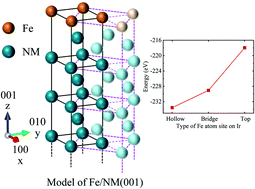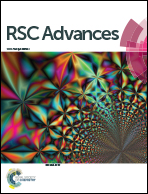Tunable magnetic ground states of iron monolayer on nonmagnetic metallic substrates by small in-plane strains
Abstract
The magnetic states of one single atomic layer of iron epitaxially grown on 4d and 5d nonmagnetic metals are studied under strain systematically using first principle calculations. Our results show that, without strain, the iron on top of different 4d and 5d nonmagnetic metals shows distinct antiferromagnetic or ferromagnetic ground states: a parallel antiferromagnetic ground state (p-AFM) on Rh and a central antiferromagnetic ground state (c-AFM) on Ir and ferromagnetic (FM) ground state on Pd, Ag, Pt and Au. However, when introducing in-plane biaxial and uniaxial strain (Δεxx) on the substrates, the ground state of iron can be manipulated easily. In detail, for biaxial strain, the ground state of iron on an Rh substrate becomes FM when Δεxx < −2.0% and c-AFM when Δεxx > 0.8%, and on an Ir substrate, the ground state of iron becomes FM when Δεxx < −2.8% and c-AFM when Δεxx > –0.8%. However, for the uniaxial strain along the x direction, while using the corresponding Poisson's ratios to determine the strain along the y direction, the ground state of iron on an Rh substrate remains the p-AFM state, but on an Ir substrate, the ground state of iron changes from c-AFM to p-AFM at Δεxx = 0.2% or Δεxx = −0.3% along the x direction respectively.



 Please wait while we load your content...
Please wait while we load your content...